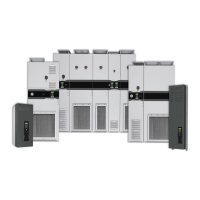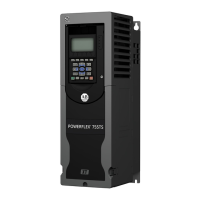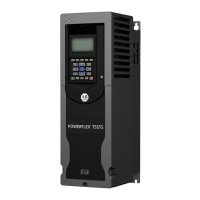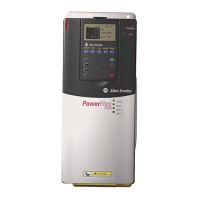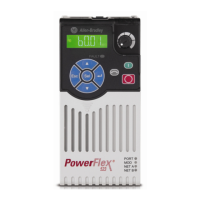Rockwell Automation Publication 750-RM100A-EN-P - August 2019 19
AC Line Tuning Chapter 2
Specifying an external capacitance value that is higher than the actual connected
capacitance can cause instability. Also, incorrect values cause a noticeable
performance degradation. If you don’t know the exact capacitance, specify the
value on the low side and use the Bus Observer feature to account for the
remaining capacitance. See Bus Observer
on page 9 for more information. If the
external bus capacitance is largely unknown, enter a zero and enable the bus
observer to estimate the entire value.
Bus Regulators
The converter uses a cascaded control loop for voltage regulation and current
regulation. The current regulator is the inner loop and the voltage regulator is the
outer loop. This method is similar to the cascaded control loop for torque
regulation that is employed on the inverter.
Voltage and Current Regulator Tuning
After the external bus capacitance is specified, the DC bus voltage and current
regulator are tuned by adjusting parameters 13:55 [Volt Reg BW] and 13:75
[Cur Reg BW]. The default bandwidth values of these parameters work for most
applications. The regulator gains (K
p
and K
i
) are set to automatically calculate
from the voltage regulator bandwidth and current regulator bandwidth. The
regulator also supports manually entered gain values.
The automatically calculated gain values for the current regulator are displayed
by parameters 13:58 [c Volt Reg Kp] and 13:60 [c Volt Reg Ki]. The
automatically calculated gain values for the voltage regulator are displayed by
parameters 13:78 [c Cur Reg Kp] and 13:80 [c Cur Reg Ki]. These read-only
parameter values are recalculated when their respective bandwidth parameter
value is changed.
The spacing between Kp and Ki gains can be varied by adjusting the damping
factor with parameter 13:56 [Volt Reg Damping]. By default, the system is
critically damped (13:56 [Volt Reg Damping] = 1.000).
If an application has a high impedance supply, the default bandwidths can cause
the LCL filter to resonate and requires the converter to be de-tuned. To de-tune,
adjust 13:55 [Volt Reg BW] and 13:75 [Cur Reg BW] down by the same
percentage. As a rule, the current regulator bandwidth is 10 times larger than the
voltage regulator bandwidth (10:1 ratio) to avoid interaction and possible
resonance. However, in applications that require a fast dynamic response with a
soft line supply, you can reduce the ratio down to 6:1.
A good indication that the converter needs to be de-tuned is the presence of
14117 ‘CapResonanceArm’ and 14118 ‘CapResonanceFlt’ alarms. Monitor
14:1216 [F0 Cap BPF Cur R], 14:1217 [F0 Cap BPF Cur S], and 14:1218 [F0
Cap BPF Cur T] to observe the LCL filter resonance. When de-tuning, lower the
bandwidths until these parameters are below the capacitor resonance fault
threshold. The thresholds are listed in the following tables.
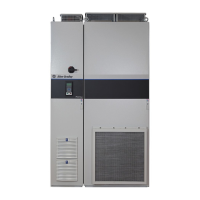
